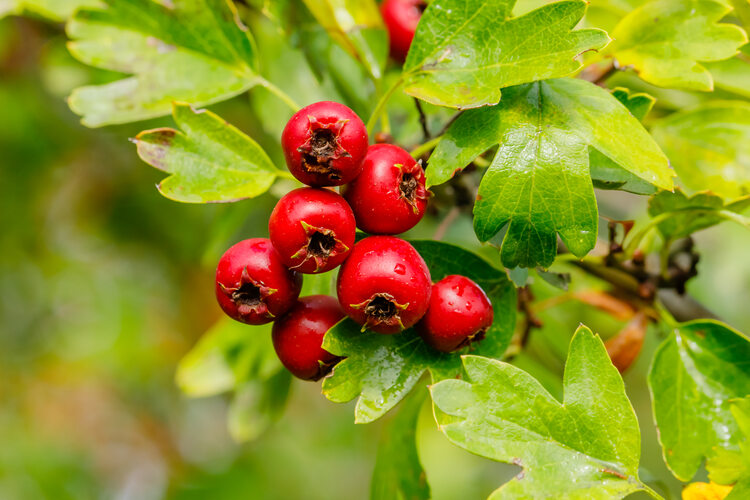
Citizen science project reveals an exceptional autumn harvest of hawthorn berries, which promises a feast for UK wildlife
By
While summer 2023 in the UK was, to put it mildly, a mixed bag weather-wise, the spring was fabulous with lots of long, mild and sunny days. And, us humans weren’t the only ones to have enjoyed such an idyllic spring. Hawthorn trees also made the most of the sunshine and that’s now paying off with a bumper harvest of hawthorn berries, which is great news for some of Britain’s wildlife.
According to the Woodland Trust, the hawthorn berry crop this autumn is the biggest recorded in the 20 years. Hawthorns, which grow in woodlands, hedgerows, scrubland and gardens, can support hundreds of species of insects, birds and mammals.
The leaves are the food plant of numerous different kinds of moth caterpillars, the flowers are munched on by dormice and they provide an important source of nectar and pollen for bees and other pollinating insects. The berries themselves, which are known as haws, are rich in antioxidants and are devoured by migrating birds such as redwings, fieldfares and thrushes. They are also consumed by many small mammals and provide an important source of food just before the lean winter period.
The findings were made by the Woodland Trust’s Nature’s Calendar project. A citizen scientist project, Nature’s Calendar asks volunteers to record information on certain species within the volunteer’s neighbourhood. The information provided is then used to monitor the effects of climate on nature. This year, recorders have sent in reports that have rated this the hawthorn berry crop at 4.2 on the fruit scale, which is deemed as ‘exceptional’. This takes in dozens of records spanning 20 years where hawthorns are judged on the abundance of their berries.

According to Dr Judith Garforth, the Woodland Trust’s citizen science officer, such a berry harvest ‘Is really good autumn news for wildlife. The fruit score is really important as it provides an indicator of winter food availability for wildlife, as well as the seed source available for natural regeneration of trees and shrubs, it’s often linked to climate variables in preceding seasons.’
The Nature’s Calendar team puts the exceptional crop down to a mild spring where temperatures hovered above average. This is when the white hawthorn flowers bloom which, if pollinated, go on to produce the red fruits in autumn.
Nature’s Calendar volunteers also record when hawthorn flowers first start opening in spring. The data shows that the UK average date of the first flowering of hawthorn was 1 May this year. This was perfect timing because one of the tree’s other names is ‘May tree’. The crop was further helped along by the warm, dry spring weather being ideal for pollinating insects.
Although Dr Garforth celebrated the bumper berry news, she went on to warn that a shortage of volunteer recorders could put such record gathering at risk in the future: ‘We desperately need more recorders to deliver such data, which is so important for tracking the nation’s seasons. We’re incredibly lucky to have historic data going back almost 300 years, but to understand how wildlife is responding to the changing climate, we need new volunteers to continue the record into the future.
‘Becoming a recorder is a great way to get into the outdoors but you can even chart nature by looking out of your window. So please do come forward – anyone can take part; you don’t need to be a scientist!’
To find out more about the Nature’s Calendar project and to sign up as a volunteer, see https://naturescalendar.woodlandtrust.org.uk/add-a-record/
Related articles:




